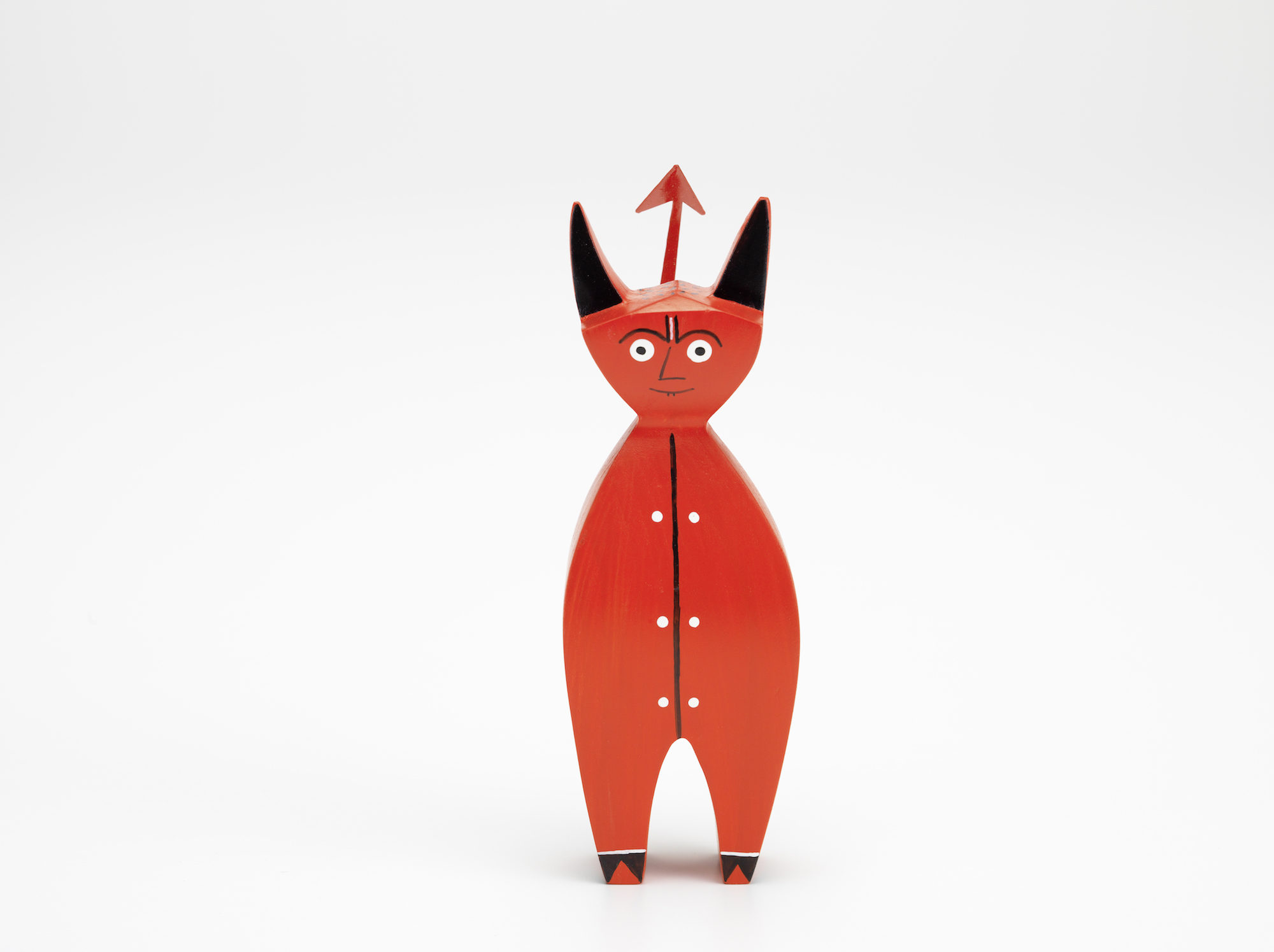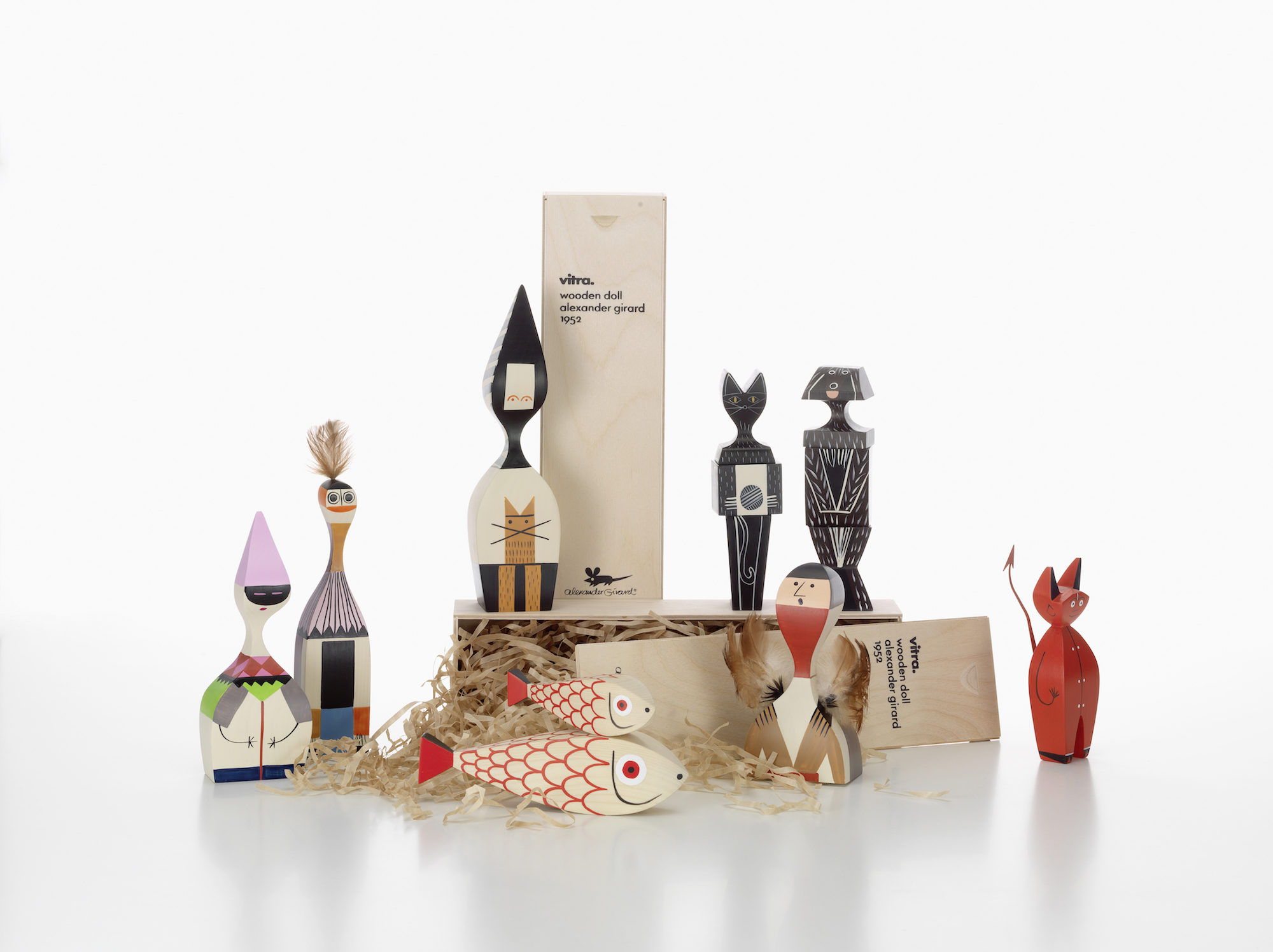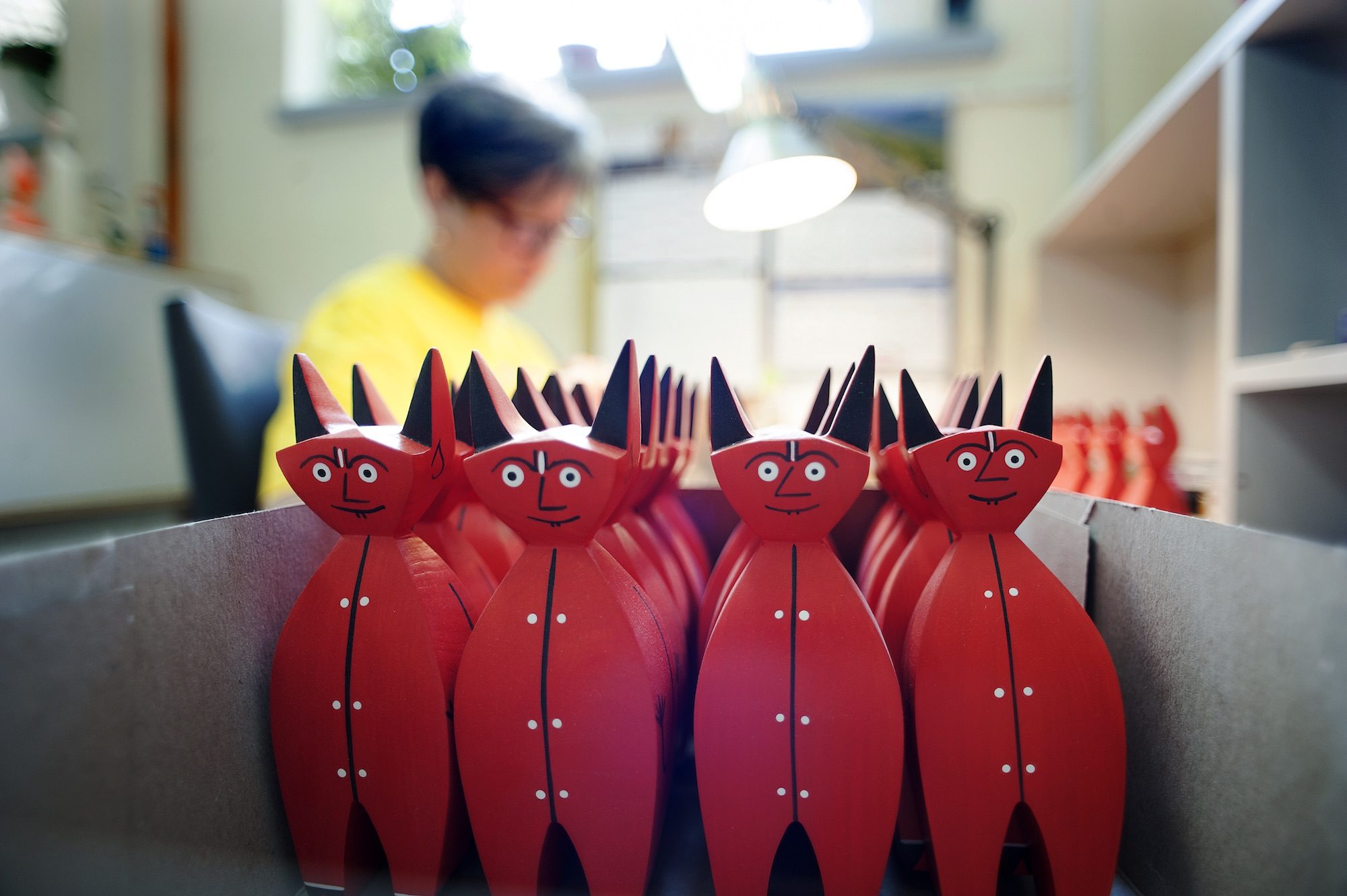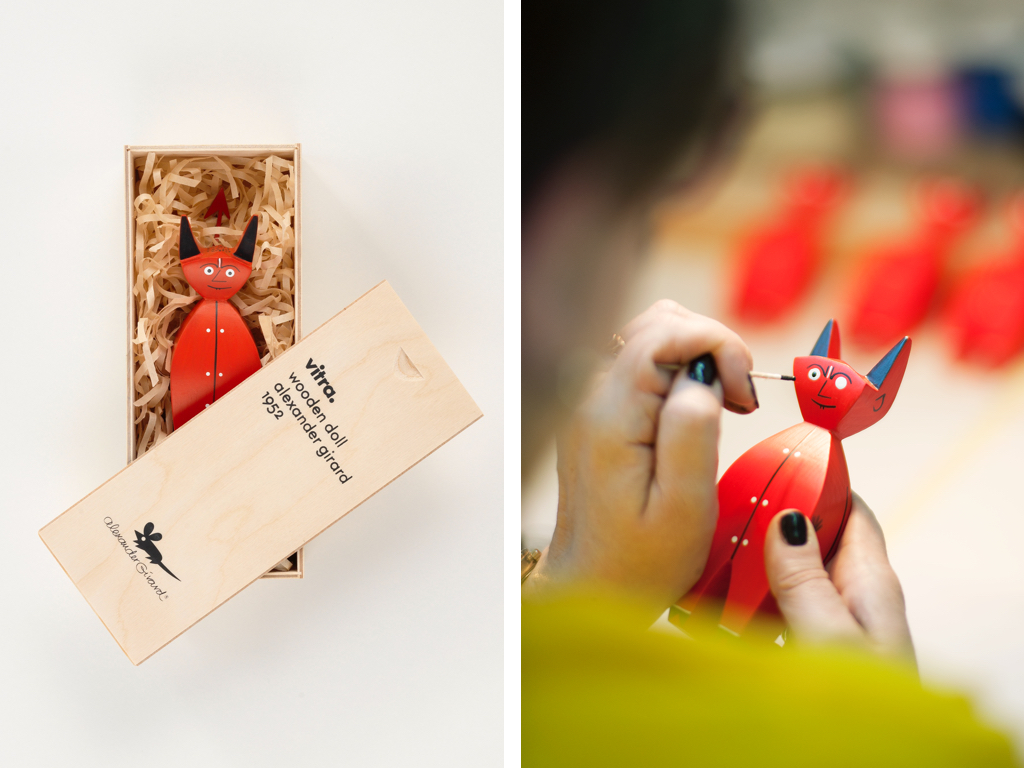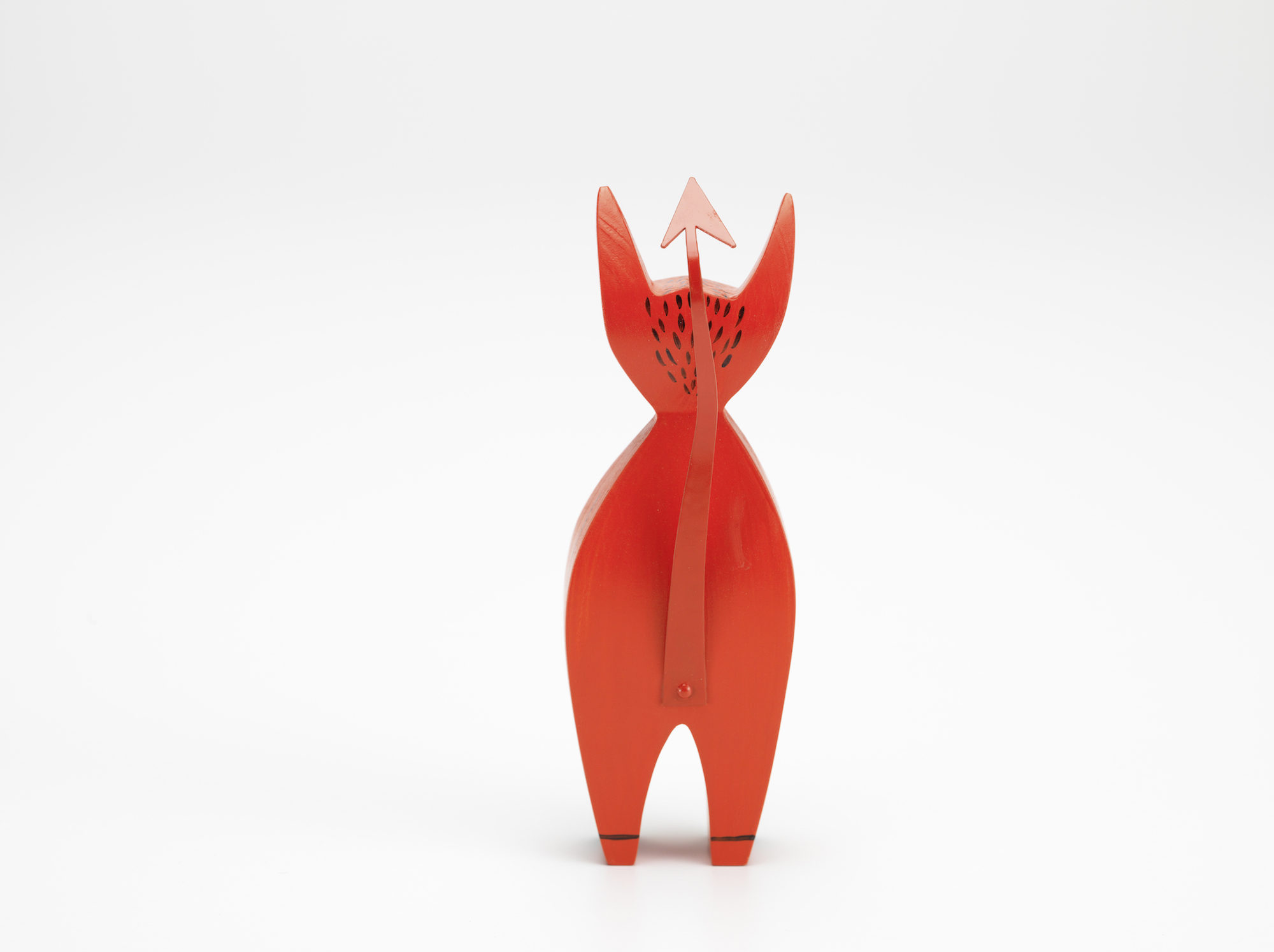Why do design diehards love Alexander Girard? I think it has something to do with the fact that his work, much like riding a bicycle on a sunny day, makes you grin. Prolific and indefatigably curious, Girard (1907–1993) created objects with cheery colors, festive motifs, and abstract or geometric forms that made him one of the most critical figures of postwar American design, along with his close friends George Nelson and Charles and Ray Eames. An enduring source of inspiration for his wide-ranging modernist work—which spans textiles to interiors to furniture—was his cherished collection of folk art, which included Mexican Day of the Dead papier mâché statuettes, puppet theaters, and Hopi beadwork figurines. Its influence is particularly apparent in Girard’s Wooden Dolls, a family of people- and animal-shaped figurines he created in 1952. The originals are part of the Vitra Design Museum’s collection, and are used as a blueprint for the meticulous reproductions the Swiss furniture brand sells today. (They were also the muse for Akris’s spring/summer 2018 collection, for which Vitra recently released a limited edition collector’s box that includes a set of two figurines.) One doll sticks out from the rest: A short, stout, fire-engine red one, called Little Devil.
It’s the only creature in the series that’s neither human nor beast. And while the other dolls have stark, staring expressions, Little Devil has an impish look about him, imbuing the carved-fir toy with life. Looking at the little guy, I wondered what compelled Girard to make him. Is there a message behind his ready, beady eyes? Searching for an answer in his hand-painted details—including his metal tail, stick-figure arms, and meager patch of hair—I couldn’t help but smile.
